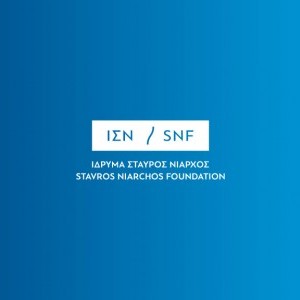(English translation below.)
De MILENIO: Compositor mexicano Jorge Sosa estrena ópera en español en NY sobre desapariciones
El compositor mexicano Jorge Sosa estrena este viernes 18 de julio en Nueva York su ópera en español Generación perdida, sobre las desapariciones en América Latina, a partir de poemas de Javier Moro Hernández, que llegará a México en noviembre próximo, en puesta en escena en Mérida, Yucatán.
“Cuando empecé a escribir esta obra no me interesaba mostrar violencia, no es una pieza sórdida, no se ven armas o gente sufriendo. No se trata de esto; se trata de hablar, de expresar nuestros sentimientos y sensaciones con el lenguaje y el lenguaje musical. Generación perdida se centra en la emoción”, dice a MILENIO Sosa, desde los ensayos en el teatro experimental La MaMa, donde se estrenará la pieza para orquesta de cámara y mezzosoprano, producida por el Teatro Grattacielo.
Después del éxito de su estreno el 9 de mayo pasado, en el Teatro de la Ciudad Esperanza Iris, de su ópera en inglés I’m a Dreamer Who No Longer Dreams (2019), Sosa lleva a Estados Unidos un drama que explora la crisis humanitaria que afecta a México y América Latina, donde el secuestro y la desaparición forzada han impactado profundamente a innumerables comunidades en la última década.
“Es una pieza hermosa, porque la poesía de Javier Moro Hernández es hermosa, al mismo tiempo que es dura y nos invita a reflexionar; se genera un contrapunto emocional que es lo que hace esta pieza especial, porque estamos hablando de una violencia muy real, pero con un lenguaje muy poético. El hacerlo de esta manera invita a la reflexión, al duelo y a la introspección. Ojalá ofrezca al público un momento de catarsis y que al hablar de violencia y trauma nos sea más fácil procesarlos y entenderlos”.
Sosa pensó Generación perdida como pieza de cámara, para mezzosoprano y cuarteto de cuerdas y piano. Los músicos estarán dirigidos por Tianhui NG y la protagonizará la cantante puertorriqueña Victoria Vargas (con su compatriota Linda Collazo en cover), y Elena Araoz en la dirección escénica. A ellos se suma Daniel Landez como proyeccionista, que presentará los videos en vivo durante la obra.
Sosa destaca que, aunque la obra es modesta en tamaño, decenas de personas participaron en su producción, en un mosaico multiétnico y multicultural de artistas migrantes, empezando por el director del Teatro Grattacielo, Stefanos Koroneos, de origen griego, quien desde el principio apoyó la pieza.
La obra, de una hora de duración, está dividida en 11 viñetas o cuadros en los que la mezzosoprano Victoria Vargas va guíando al espectador a través de una historia que no está concebida linealmente.
“La idea de las proyecciones y la dirección de escena es que nos transportan a distintos lugares, a veces somos pasajeros en un autobús que va camino a la frontera, otras estamos viendo la luna y las estrellas en nuestro pueblo, o imágenes históricas de las Madres de la Plaza de Mayo (en Buenos Aires), o de las madres buscadoras (en México). Las imágenes ayudan a contar la historia y brindan el soporte dramático”, dice Sosa, nacido en Ciudad de México en 1976 y residente en Estados Unidos desde 2002.
“El primer movimiento, el primer cuadro, que se llama ‘La noche cae’, está basado en eventos reales: la tragedia de 72 los migrantes que fueron secuestrados y asesinados en Tamaulipas, en el rancho San Fernando”, refirió el compositor sobre la matanza de agosto de 2010, en el sexenio de Felipe Calderón.
“En otro cuadro, ‘Dolor que quema’, hablamos del secuestro como arma de guerra, durante las dictadura en Argentina, en Uruguay, y durante los últimos 18 o 20 años de gobiernos democráticamente electos en México”, añadió Sosa, al aclarar que Generación perdida no abarca sólo un país, sino el continente.
Otro movimiento se llama “El río de acero” que aborda el constante flujo de armas de alto poder, que cruza libremente de Estados Unidos a México y América Latina, con el que se arman grupos delictivos.
El resto de las viñetas hablan de migrantes desaparecidos en su ruta a la frontera o por qué deben abandonar sus comunidades, o en cómo las ciudades se convierten en campos de batalla, o los fantasmas que quedan en esos pueblos que han sucumbido a la violencia, el desplazamiento de pueblos enteros en Colombia, e incluso de la tragedia de acudir al Ministerio Público en México, entre otros.
“La unidad de la pieza es en parte por el lenguaje de Javier Moro Hernández, que es esta mezcla de poesía y realismo, casi periodístico, porque Javier es periodista además de poeta, y eso le da unidad a la pieza en cuanto a temática. Y en términos de música, cada uno lo que trata de hacer es capturar la emoción del texto de Javier. Por ejemplo, ‘La noche cae’ es casi como una canción de cuna, porque habla del trayecto hacia la frontera de noche, el estar cansado, viajando, se enfoca en esas sensaciones”.
“En ‘Urbe brutal’ trato de dar la sensación de peligro, de ansiedad; tiene ritmos muy ágiles, muy repetitivos, una música muy violenta, porque está tratando de ilustrar esta sensación de estar en un campo de batalla. Hay motivos que cruzan distintos movimientos, a uno le llamo ‘del duelo’; es melódico y aparece en distintas partes donde Javier expresa la sensación de duelo, de pérdida, que aparece en varios poemas”, expone el compositor mexicano, que considera la pieza “impresionista”.
Con escenografía minimalista, con proyecciones, juegos de luz para crear atmósferas fantasmales, la pieza está concebida por el compositor como salvaguarda de la memoria histórica sobre la violencia.
“Sí, definitivamente es como un réquiem secular, digamos. Es muy importante en el texto de Javier la memoria, que no se olviden estas personas, que no se vuelvan sólo datos, sino que quede algo, no nada más en la memoria de sus familiares, sino en nuestra memoria colectiva. Y ese es un tema recurrente en el texto de Javier. Y también para mí es importante dejar un trabajo que sirva como memoria de esta violencia que vivimos desde hace mucho tiempo en nuestros países en América Latina”, agrega Sosa.
Agrega que el duelo es otro elemento en la poesía y parte importante de la pieza y la puesta en escena.
“Es la sensación inconclusa que nos deja perder a alguien, de nunca tener la oportunidad de cerrar ese capítulo al estar alguien desaparecido, al no saber qué fue lo que sucedió con nuestros seres queridos. Y todas estas son emociones están en la poesía, y tanto la dirección escénica como la dirección musical, como la intérprete, tratamos de amplificar estas emociones o de darles un cauce hacia el público.
“Va a ser una experiencia única. Y lo que me gustaría que la gente se llevara es una sensación de comunidad, de que no estamos solos, sino que colectivamente podemos sentir empatía y colectivamente podemos acompañarnos y hacer algo en conjunto”, comenta el compositor mexicano.
Prevé que habrá una lectura diferente en las presentaciones en Estados Unidos a las que se ven en otros países, la segunda será un parque público junto a la zona de migrantes de Chinatown, en Nueva York.
“Es importante presentar acá esta pieza porque en EU no se habla de estos temas; se habla de migración, pero no de las razones, de las condiciones que obligan a la gente a migrar. Y eso la pieza lo aborda. Hablamos del tráfico de armas, de los adictos, de cómo la adicción en EU es la que aviva el fuego de la guerra. O de las armas que se trafican ilegalmente a América Latina, que generan las condiciones para que el crimen organizado ocupe partes importantes del continente a base de fuerza. Se habla del estigma del migrante, pero hay que entender que es responsabilidad compartida”, sostiene.
— — —
Mexican composer Jorge Sosa premieres his Spanish-language opera Generación Perdida in New York this Friday, July 18. The opera, based on poems by Javier Moro Hernández and centered on the issue of disappearances in Latin America, will be presented in Mexico this coming November, in a staged production in Mérida, Yucatán.
“When I started writing this work, I wasn’t interested in showing violence—it’s not a sordid piece. You don’t see weapons or people suffering. That’s not the point. The point is to speak, to express our feelings and sensations through language and musical language. Generación Perdida is centered on emotion,” Sosa told MILENIO from rehearsals at the experimental theater La MaMa, where the piece for chamber orchestra and mezzo-soprano will premiere, produced by Teatro Grattacielo.
Following the success of the May 9 premiere at Teatro de la Ciudad Esperanza Iris of his English-language opera I’m a Dreamer Who No Longer Dreams (2019), Sosa now brings to the U.S. a drama that explores the humanitarian crisis affecting Mexico and Latin America, where kidnapping and forced disappearances have deeply impacted countless communities over the past decade.
“It’s a beautiful piece, because the poetry of Javier Moro Hernández is beautiful—even while it’s harsh and invites us to reflect. It creates an emotional counterpoint that makes the work special. We’re speaking of a very real violence, but through a highly poetic language. Presenting it this way invites reflection, mourning, and introspection. I hope it offers the audience a moment of catharsis—and that by talking about violence and trauma, it becomes easier to process and understand them.”
Sosa conceived Generación Perdida as a chamber work for mezzo-soprano, string quartet, and piano. The musicians will be conducted by Tianhui NG, with Puerto Rican singer Victoria Vargas in the lead role (with fellow Puerto Rican Linda Collazo as cover), and stage direction by Elena Araoz. Also joining is Daniel Landez as projection designer, presenting live video during the performance.
Sosa emphasizes that, although the piece is modest in scale, dozens of people participated in the production—a multiethnic and multicultural mosaic of migrant artists. He highlights the support of Teatro Grattacielo’s Artistic Director Stefanos Koroneos, of Greek origin, who championed the project from the beginning.
The hour-long work is divided into 11 vignettes or scenes, through which mezzo-soprano Victoria Vargas guides the audience in a non-linear narrative.
“The idea behind the projections and the stage direction is to transport us to different places. At times, we’re passengers on a bus heading toward the border; at others, we’re looking at the moon and stars in our hometown; or we see historical footage of the Mothers of the Plaza de Mayo (in Buenos Aires) or the madres buscadoras (in Mexico). The images help tell the story and provide dramatic support,” says Sosa, who was born in Mexico City in 1976 and has lived in the United States since 2002.
“The first movement, the first vignette, called The Night Falls, is based on real events: the tragedy of the 72 migrants who were kidnapped and murdered in Tamaulipas, at the San Fernando ranch,” the composer said, referring to the August 2010 massacre during the administration of Felipe Calderón.
“In another vignette, Pain That Burns, we address kidnapping as a weapon of war—during the dictatorships in Argentina and Uruguay, and over the last 18 or 20 years under democratically elected governments in Mexico,” Sosa added, clarifying that Generación Perdida is not limited to a single country, but encompasses the entire continent.
Another movement is called “The River of Steel,” which addresses the constant flow of high-powered weapons that freely crosses from the United States to Mexico and Latin America, and which is used to arm criminal groups.
The remaining vignettes speak of migrants who disappear on their way to the border, or why they must leave their communities, or how cities become battlefields, or the ghosts that remain in those towns that have succumbed to violence, the displacement of entire communities in Colombia, and even the tragedy of going to the Public Ministry in Mexico, among others.
“The unity of the piece is partly due to Javier Moro Hernández’s language, which is this blend of poetry and realism, almost journalistic, because Javier is a journalist as well as a poet, and that gives the piece unity thematically. And in terms of music, what each one tries to do is capture the emotion of Javier’s text. For example, ‘La noche cae’ is almost like a lullaby, because it talks about the journey to the border at night, being tired, traveling, it focuses on those sensations.”
“In ‘Urbe brutal’ I try to convey the feeling of danger, of anxiety; it has very agile, very repetitive rhythms, very violent music, because it tries to illustrate this feeling of being on a battlefield. There are motifs that intersect different movements; I call one ‘del duelo’ (of grief); it’s melodic and appears in different parts where Javier expresses the feeling of grief, of loss, which appears in several poems,” explains the Mexican composer, who considers the piece “impressionist.”
With minimalist scenery, projections, and light effects to create ghostly atmospheres, the piece is conceived by the composer as a safeguard of historical memory regarding violence.
“Yes, it’s definitely like a secular requiem, so to speak. Memory is very important in Javier’s text, that these people are not forgotten, that they don’t become just data, but that something remains, not just in the memories of their families, but in our collective memory. And that is a recurring theme in Javier’s text. And it’s also important for me to leave a work that serves as a memorial to this violence that we have experienced for so long in our Latin American countries,” adds Sosa.
He adds that grief is another element in poetry and an important part of the piece and its staging.
“It’s the unfinished feeling that losing someone leaves us with, of never having the opportunity to close that chapter when someone is missing, of not knowing what happened to our loved ones. And all of these emotions are present in poetry, and both the stage direction and the musical direction, as well as the performer, try to amplify these emotions or channel them to the audience.
“It’s going to be a unique experience. And what I would like people to take away is a sense of community, that we are not alone, but that collectively we can feel empathy and collectively we can accompany each other and do something together,” comments the Mexican composer.
He anticipates that there will be a different reading in the performances in the United States than those seen in other countries; the second will be in a public park next to the migrant district of Chinatown, in New York.
“It’s important to present this piece here because these issues aren’t talked about in the US; “There’s talk about migration, but not about the reasons, the conditions that force people to migrate. And this piece addresses that. We talk about arms trafficking, about addicts, about how addiction in the US fuels the fires of war. Or about the weapons illegally trafficked to Latin America, which create the conditions for organized crime to occupy significant parts of the continent through force. There’s talk about the stigma of migrants, but we have to understand that it’s a shared responsibility,” he maintains.








